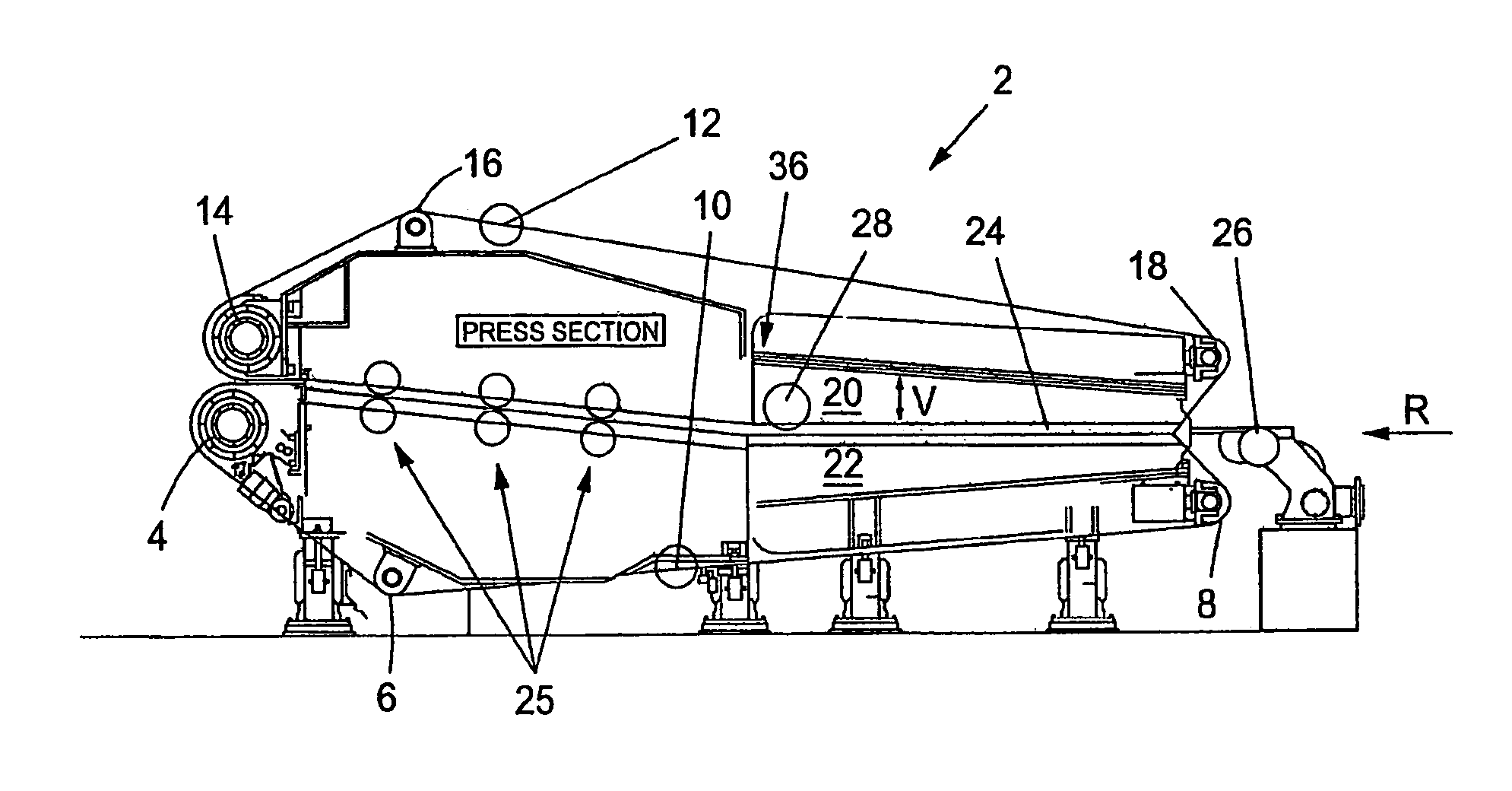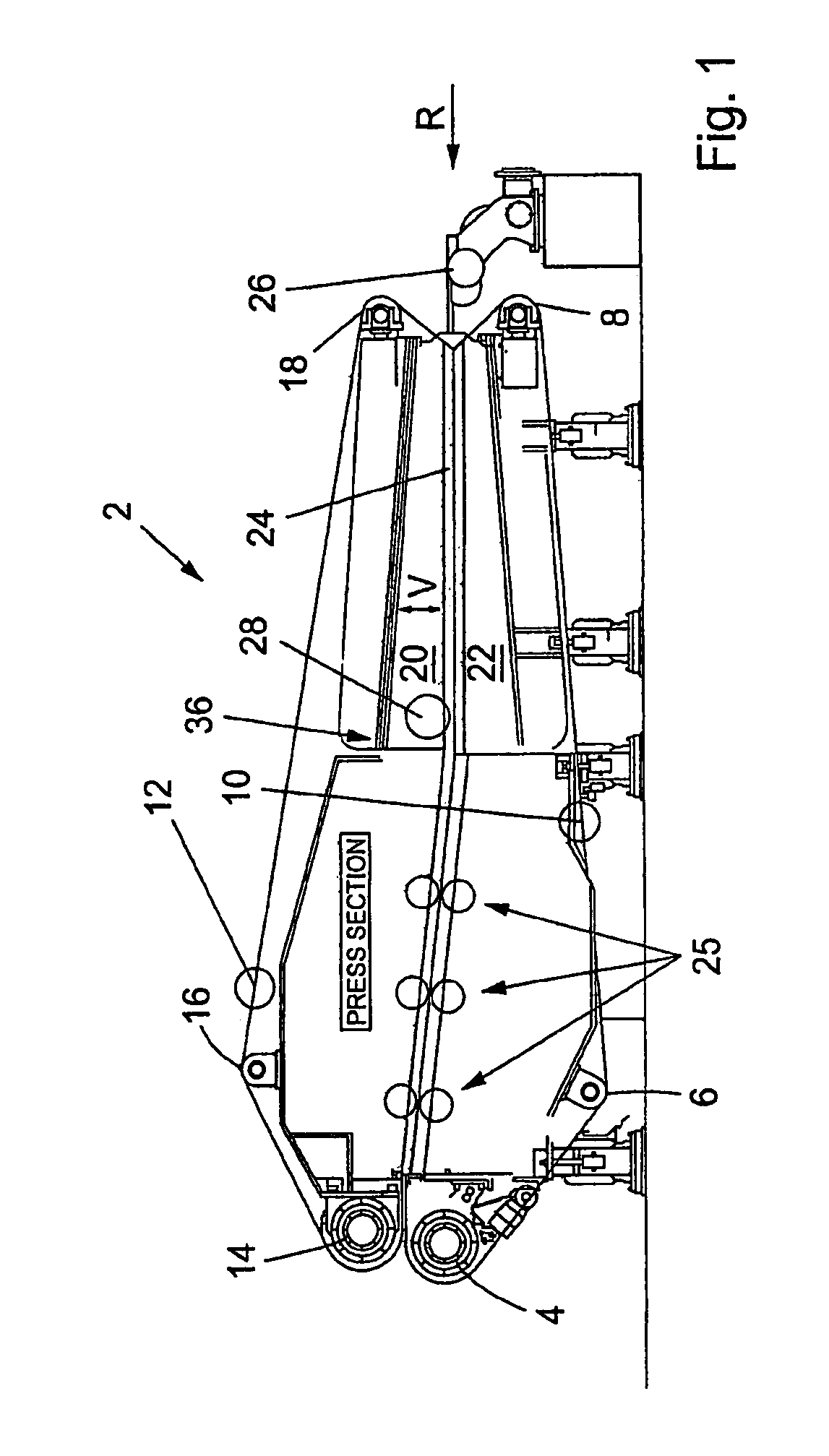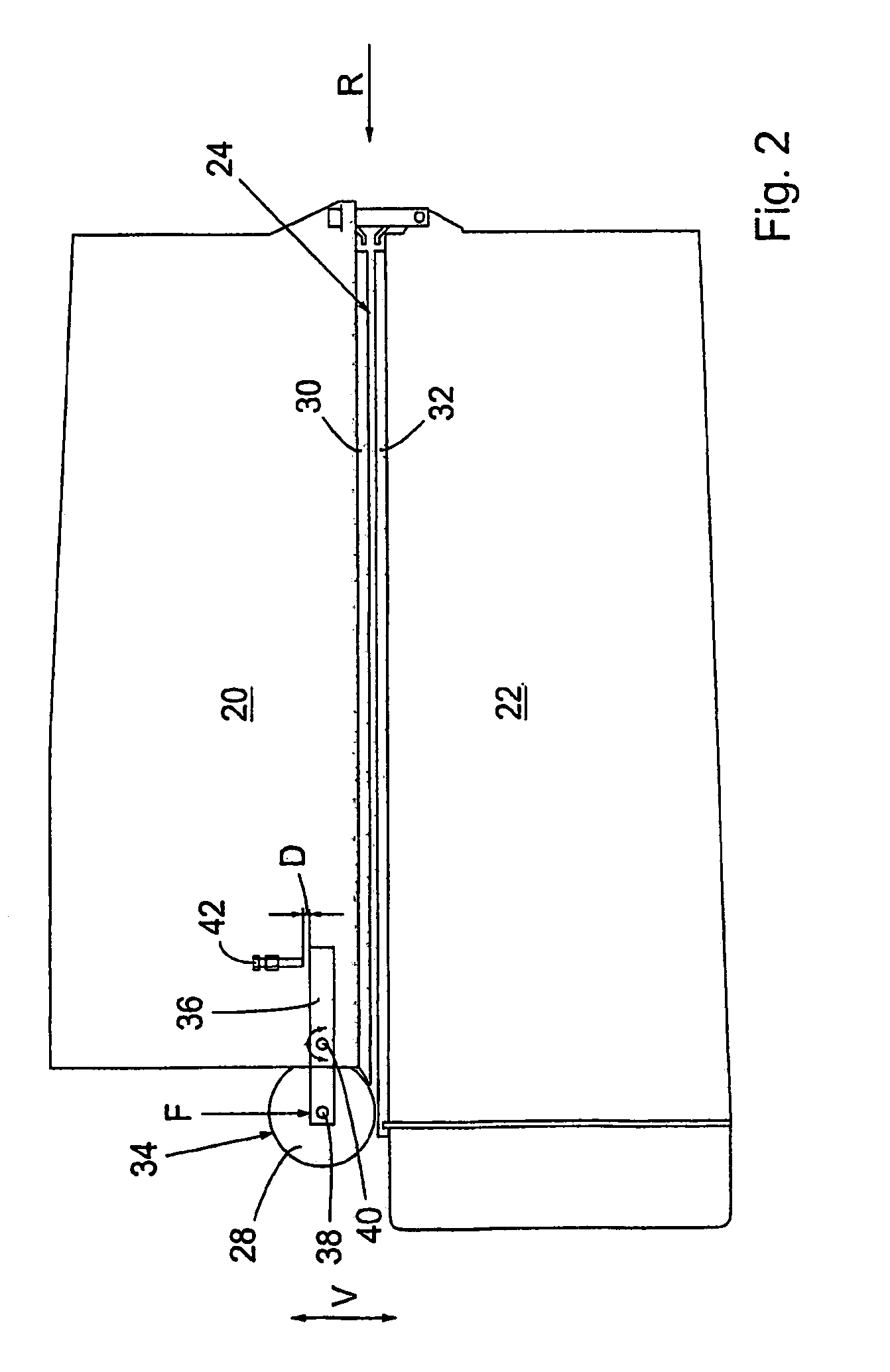Method and apparatus of a twin-wire press
a twin-wire press and press body technology, applied in the field of methods and twin-wire presses, can solve the problems of high energy consumption for operation, high frictional force, and fiber web may be destroyed, and achieve the effect of improving the dewatering efficiency of fiber web and favorable dewatering
- Summary
- Abstract
- Description
- Claims
- Application Information
AI Technical Summary
Benefits of technology
Problems solved by technology
Method used
Image
Examples
Embodiment Construction
[0015]Referring to the Figures, in which like reference numerals refer to like elements thereof, FIG. 1 shows a twin-wire press 2 according to the present invention and which is suitable for carrying out the method according to the present invention. The twin-wire press 2 comprises three lower rolls, namely a drive roll 4, a control roll 6 and a tensioning roll 8. An endless lower wire 10 runs in a path around the lower rolls 4, 6 and 8. In a corresponding manner an upper endless wire 12 runs in a path around three upper rolls, namely a drive roll 14, a control roll 16 and a tensioning roll 18. An upper dewatering table 20, that supports the upper wire 12, and a lower dewatering table 22, that supports the lower wire 10, forms the dewatering space 24 between the wires 10, 12 in which the fiber suspension / web is dewatered under movement of the wires and compression between the dewatering tables (in a direction R, from the right to the left in the drawings), whereby the dewatered susp...
PUM
| Property | Measurement | Unit |
|---|---|---|
| pressing force | aaaaa | aaaaa |
| concentration | aaaaa | aaaaa |
| displacement | aaaaa | aaaaa |
Abstract
Description
Claims
Application Information
 Login to View More
Login to View More - R&D
- Intellectual Property
- Life Sciences
- Materials
- Tech Scout
- Unparalleled Data Quality
- Higher Quality Content
- 60% Fewer Hallucinations
Browse by: Latest US Patents, China's latest patents, Technical Efficacy Thesaurus, Application Domain, Technology Topic, Popular Technical Reports.
© 2025 PatSnap. All rights reserved.Legal|Privacy policy|Modern Slavery Act Transparency Statement|Sitemap|About US| Contact US: help@patsnap.com



